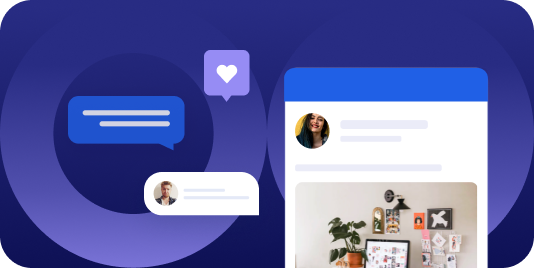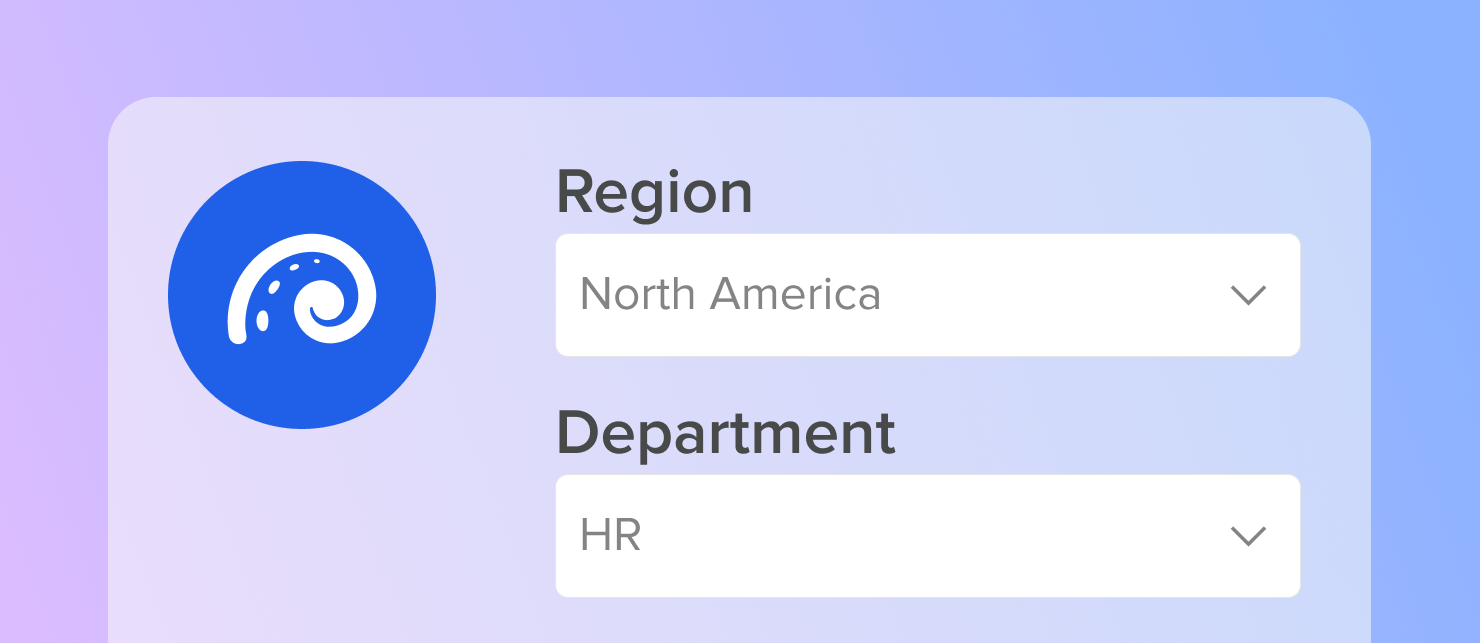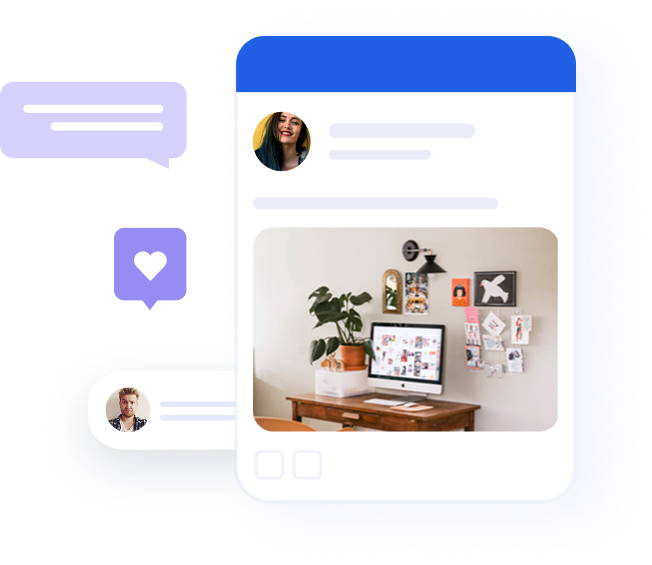B2B social selling: 7 reasons you need to be doing it

Table of contents
A few years ago, no B2B CEO would’ve asked, “What is B2B social selling?” Today, it’s a question making its way into boardrooms and sales team meetings alike. And for good reason: traditional tactics like cold calling are no longer enough.
As buyer behavior shifts and trust moves from inboxes to social networks, the best sales reps aren’t just pushing products or services. They’re building relationships, sharing relevant insights, and earning credibility where their potential customers are already spending time: on social media platforms.
This is the essence of social selling. It’s a strategy that helps social sellers connect with prospects earlier, nurture leads more naturally, and tailor their messaging around real pain points instead of outdated pitches. B2B social selling is all about starting conversations and building trust that leads to closed deals.
If you’re wondering how to get started with social selling or simply want to build a more effective social selling motion, you’re in the right place. Below, we’ve rounded up 7 proven benefits of social selling — from boosting visibility to driving features benefit selling — so you can transform your pipeline, increase conversions, and future-proof your B2B sales strategy.
What is social selling?
Social selling is a sales technique focused on cultivating relationships with potential customers and nurturing a sales pipeline through personal social networks. This approach allows sales teams to educate, share insights, and position themselves as thought leaders in their industry, all while moving away from outdated methods like cold calling.
Unlike traditional outreach, social selling is centered around building trust by sharing relevant content and starting conversations that lead to lasting relationships. This modern approach to sales can make all the difference for teams looking to consistently hit quota. It boosts their pipeline and conversion rates by reaching new prospects and engaging buyers with valuable, insight-driven content. More and more B2B teams are seeing results by selling with social, instead of pushing harder with traditional methods.
Here’s why it’s making such a difference:

Sources: Gartner, LinkedIn, Cognism
The B2B buyer journey has changed
The dramatic shift in the B2B buyer journey has driven decision-makers away from sales reps and toward social media platforms to research solutions and make their purchasing decisions. In fact, 75% of B2B buyers now prefer a rep-free experience when evaluating products or services.
With fewer buyers open to direct outreach, a successful social selling strategy becomes essential. It gives social sellers a way to meet buyers where they are, offering value through relevant content instead of unsolicited pitches.
Social media platforms allow you to reach your target audience
B2B buyers are turning to social channels for credible, peer-driven information. LinkedIn research shows that 75% of buyers use social media to inform their purchasing decisions, and 50% specifically rely on LinkedIn. There are a staggering 65 million decision-makers active on LinkedIn alone, with 4 out of 5 users involved in the decision-making process.
For teams just getting started with social selling, this is a clear signal. Your audience is online, and they are looking for the kind of insight and features and benefits breakdowns that your content can provide.
Based on this data, it is clear that adopting modern social selling strategies is crucial for sales teams to effectively sell in today’s buyer-driven marketplace.
Social selling is key to staying competitive
Engaging with these potential customers online does more than build brand awareness, it actively fuels your sales pipeline and drives real results.
Buyers today prioritize trust, especially in personal recommendations. Statistics show that 76% of people are more likely to trust content shared by individuals rather than corporate brands. So it is no surprise that 78% of businesses using social selling outperform those that don’t.
In addition to keeping your business competitive, social selling has become an essential strategy for sales reps to build credibility, highlight the features and benefits of your offering, and guide buyers through the funnel with content that speaks directly to their pain points. It helps build relationships, foster trust, and ultimately close more deals. Selling with social is no longer optional, but a core skill for any modern sales team.
The top 7 social selling benefits
For sales teams, the idea of adding ‘social media advocate’ to your list of responsibilities may sound daunting. But the returns will pay off when you see your conversion rates increase significantly.
Here are our top 7 social selling benefits:
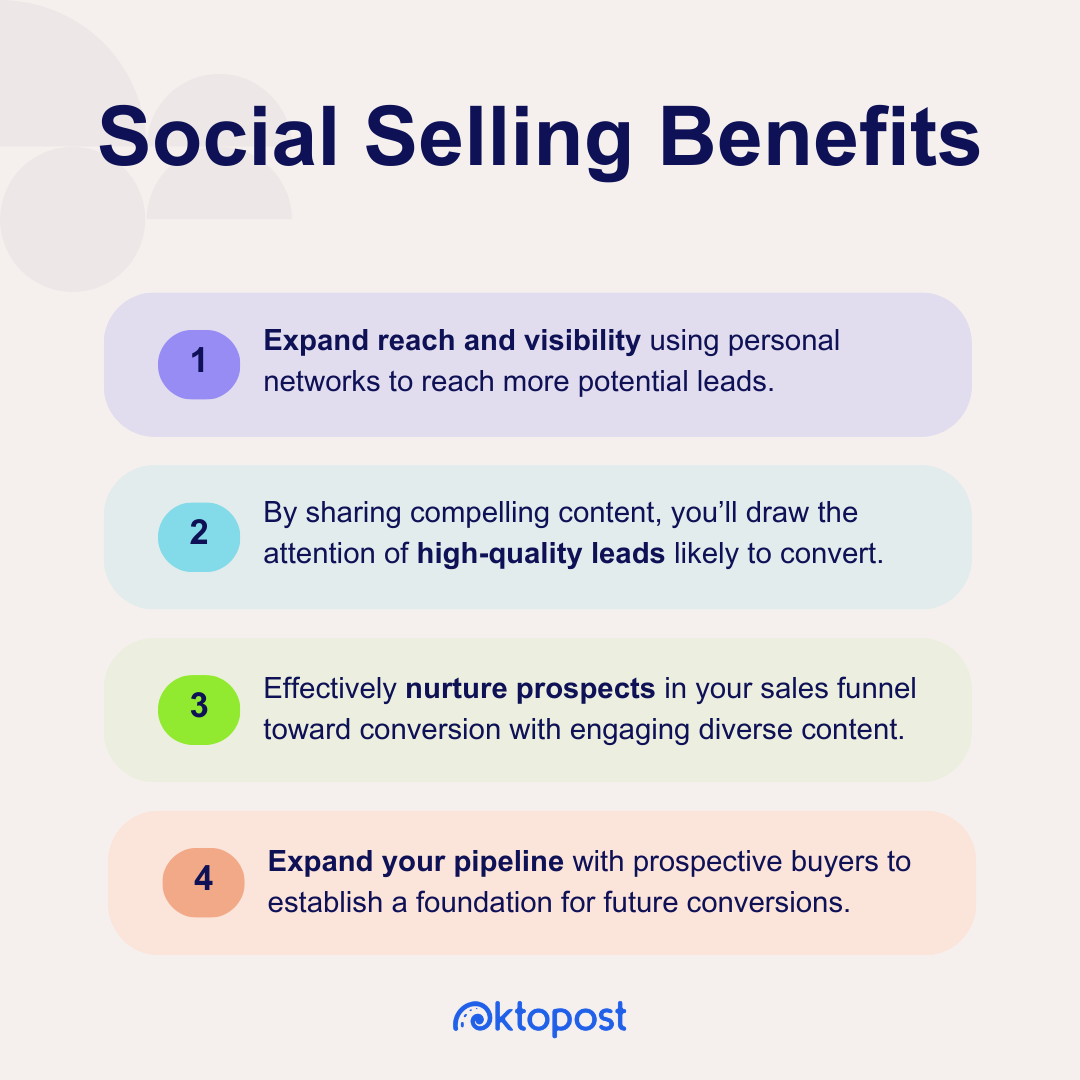
1. More visibility on social media platforms
Instead of dialing strangers, let potential customers come to you.
By consistently sharing relevant content on social networks like LinkedIn, your sales reps can get in front of the right audience without sounding salesy. Successive LinkedIn algorithm updates favor personal connections, which means the content your team shares (not your company page) is what shows up on your buyers’ feeds.
Understanding this shift is key to becoming a trusted voice in your industry. Over time, making personal profiles more visible and active drives higher-quality engagement. The resulting uplift in engagement is what every B2B marketing needs to scale their influence and drive more effective social selling outcomes.
2. High-quality leads that actually convert
Publishing relevant content on social media is a powerful way to build relationships and engage around your buyers’ pain points. The people who follow and interact with that content are already interested. That’s inbound intent.
Instead of pushing your products or services, you’re pulling in qualified leads through thought leadership, relevant content, and genuine conversations. And because they’ve already seen the features and benefits of what you offer through social proof and posts, they arrive warmer and more ready to buy.
3. A smarter way to nurture prospects
You don’t need to slide into their inbox every week to stay top-of-mind. A steady stream of blog posts, industry insights, and bite-size takeaways keeps potential customers engaged without feeling spammed.
This is effective social selling: using platforms like LinkedIn to reinforce your value, show how your features benefit their goals, and make it easy for buyers to say yes when the time is right. It’s low-pressure, high-impact nurturing that fits seamlessly into your social selling strategy.
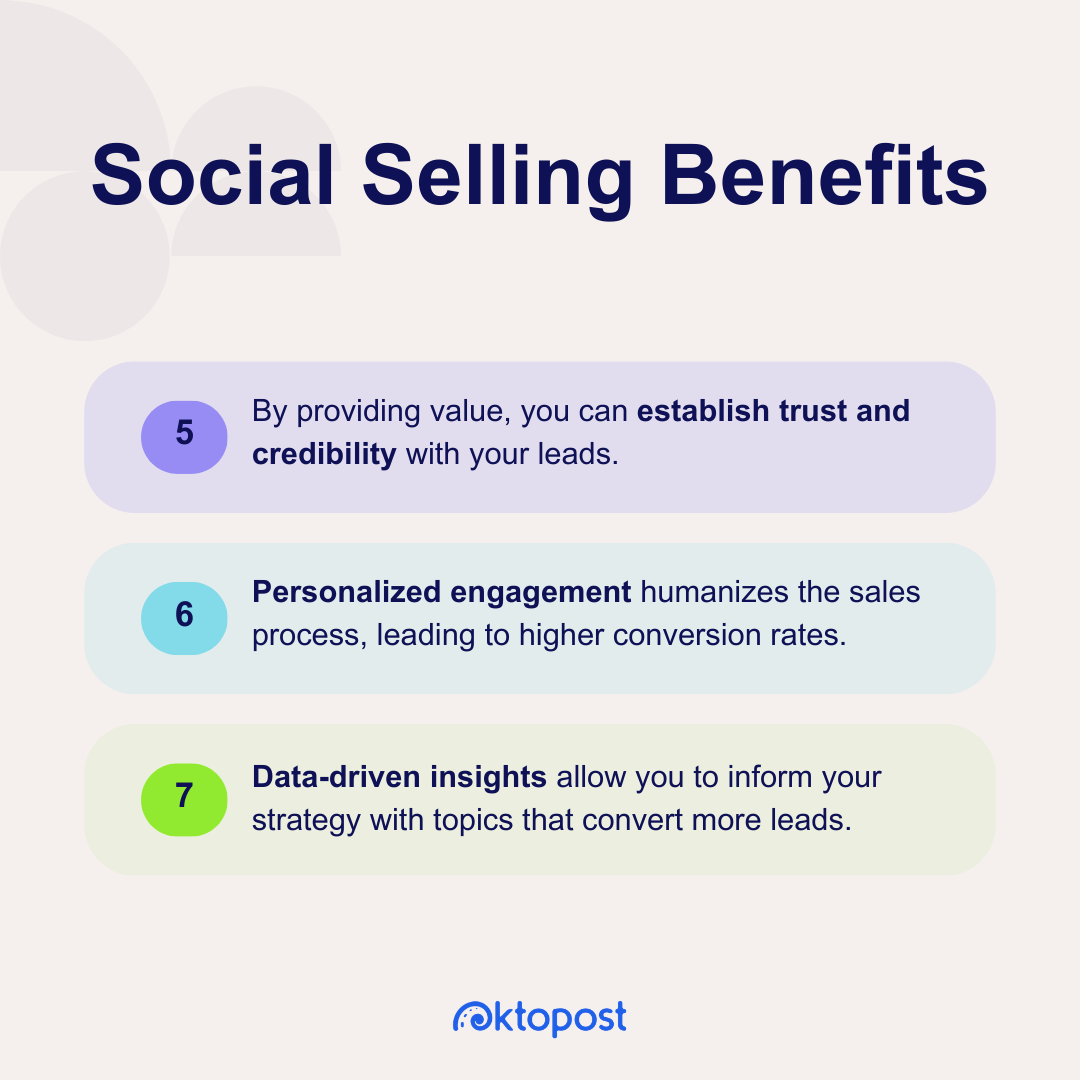
4. A better sales pipeline
Not every lead is ready to buy today. But that doesn’t mean they won’t be ready tomorrow. Social media platforms are where people go to learn. When they see you sharing relevant content regularly, you stay on their radar.
This means you can build long-term visibility with decision-makers who aren’t in-market now, but will be later. With consistent visibility and trust-building, you turn passive connections into potential customers who already know your name when it’s time to evaluate vendors.
5. Built-in trust and authority
Social selling is features benefit selling, but without the pitch. The value comes first. By addressing real pain points, spotlighting success stories, and sharing relevant insights, your sales reps earn trust, before they ever talk about the sale.
This creates a strong foundation for future conversations. When buyers see you offering value with no strings attached, your credibility increases.
6. Personalized, two-way engagement
The magic of social selling is that your audience talks back. They comment. They ask questions. They share.
This kind of personalized engagement simply doesn’t exist in cold outreach. It makes you more human, more relatable, and more trusted.
When someone engages with your post or opens a conversation, they’re giving you a clear signal of interest. These touchpoints create micro-moments of influence that social sellers can use to guide prospects toward closing deals in a natural and authentic way.
7. Real-time, data-driven sales insights
To find out what’s working, just look at your posts.
By monitoring what types of relevant content drive engagement, and what’s falling flat, you get direct, unfiltered feedback on what your audience cares about.
This feedback loop becomes your content strategy cheat code. When you use these insights to tailor your outreach, reference specific blog posts, or double down on messaging that’s resonating, you make every sales conversation sharper and more likely to convert.
Even in B2B, emotionally resonant content can outperform dry product updates. Radical transparency and human-first storytelling have proven to drive stronger engagement on social media platforms, especially when paired with the right data to guide your approach.
Recommended for further reading
Hit your sales targets with social selling
It’s time for sales teams to harness the vast opportunities and benefits social selling has to offer.
By providing you access to key decision-makers, social selling can significantly shorten the sales cycle by expanding your reach and positioning you as an expert in your field. This ability to foster meaningful relationships, trust, and conversations with potential buyers, will transform your sales pipeline and have you closing more deals with high-quality leads.
With the aid of an employee advocacy tool, executing social selling becomes effortless in just a few clicks. To learn more about how social selling can revolutionize your sales strategy, contact us today.
